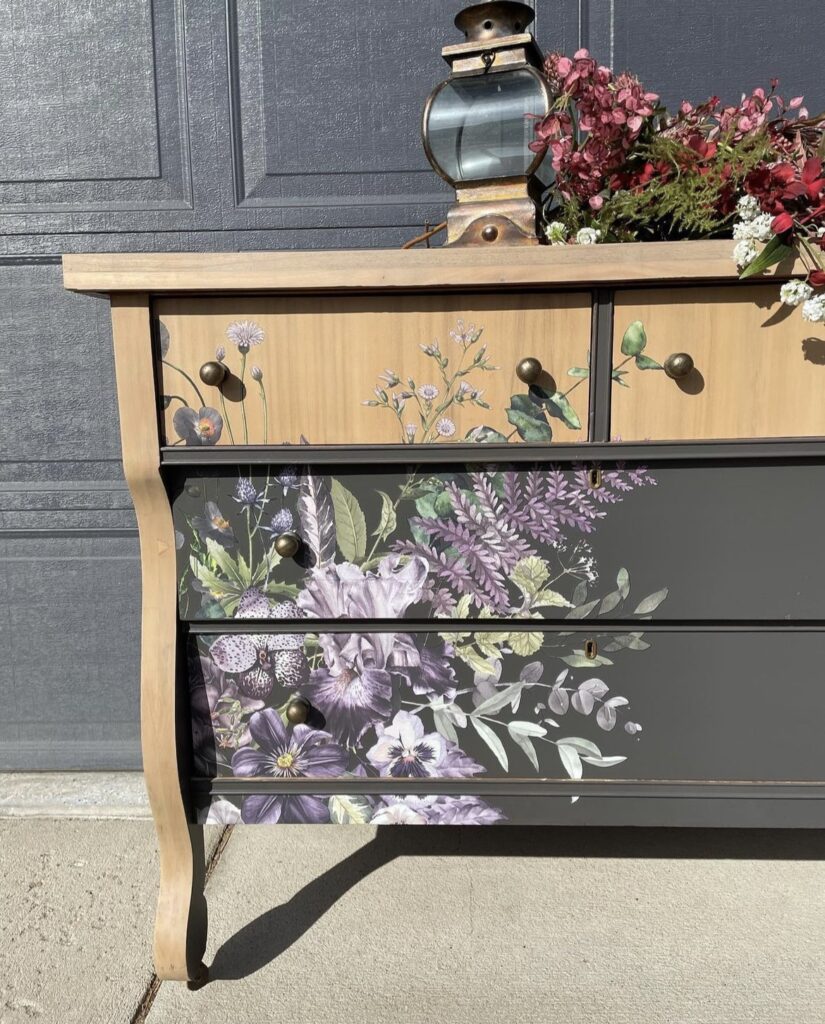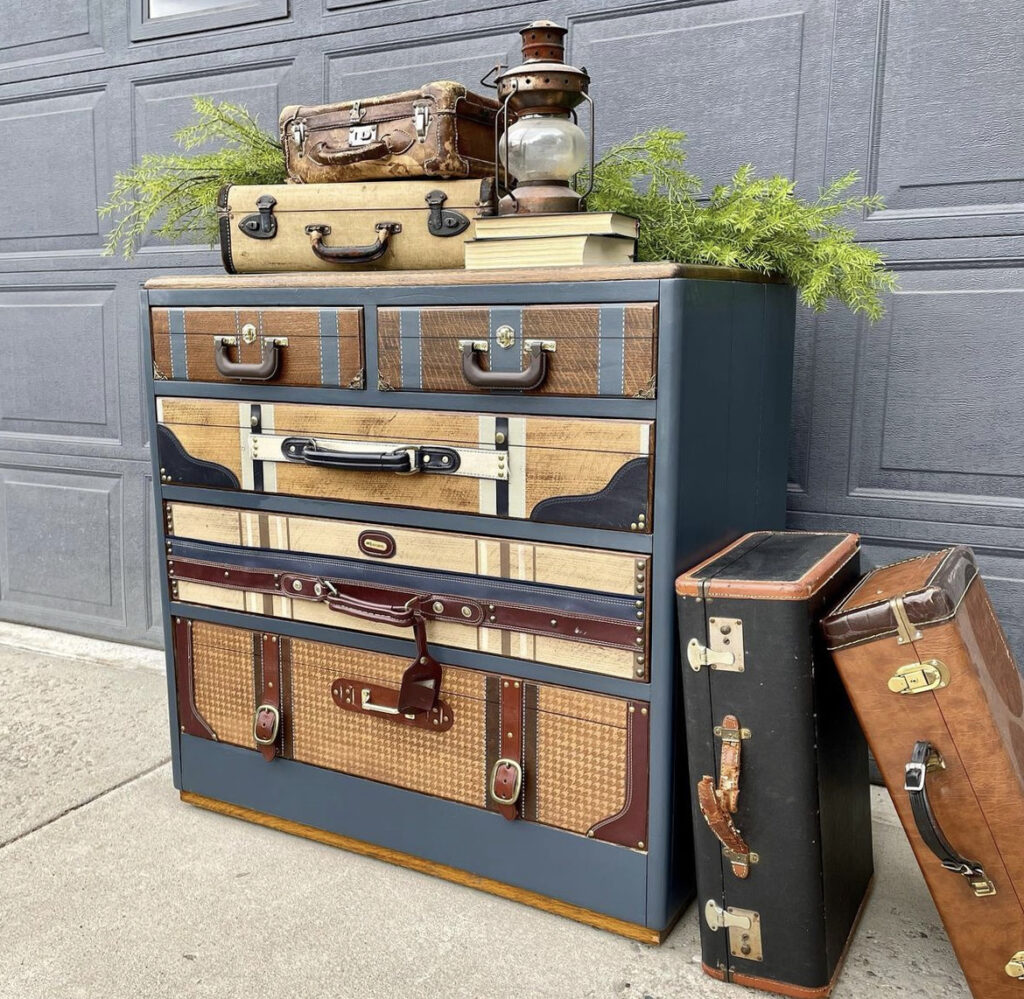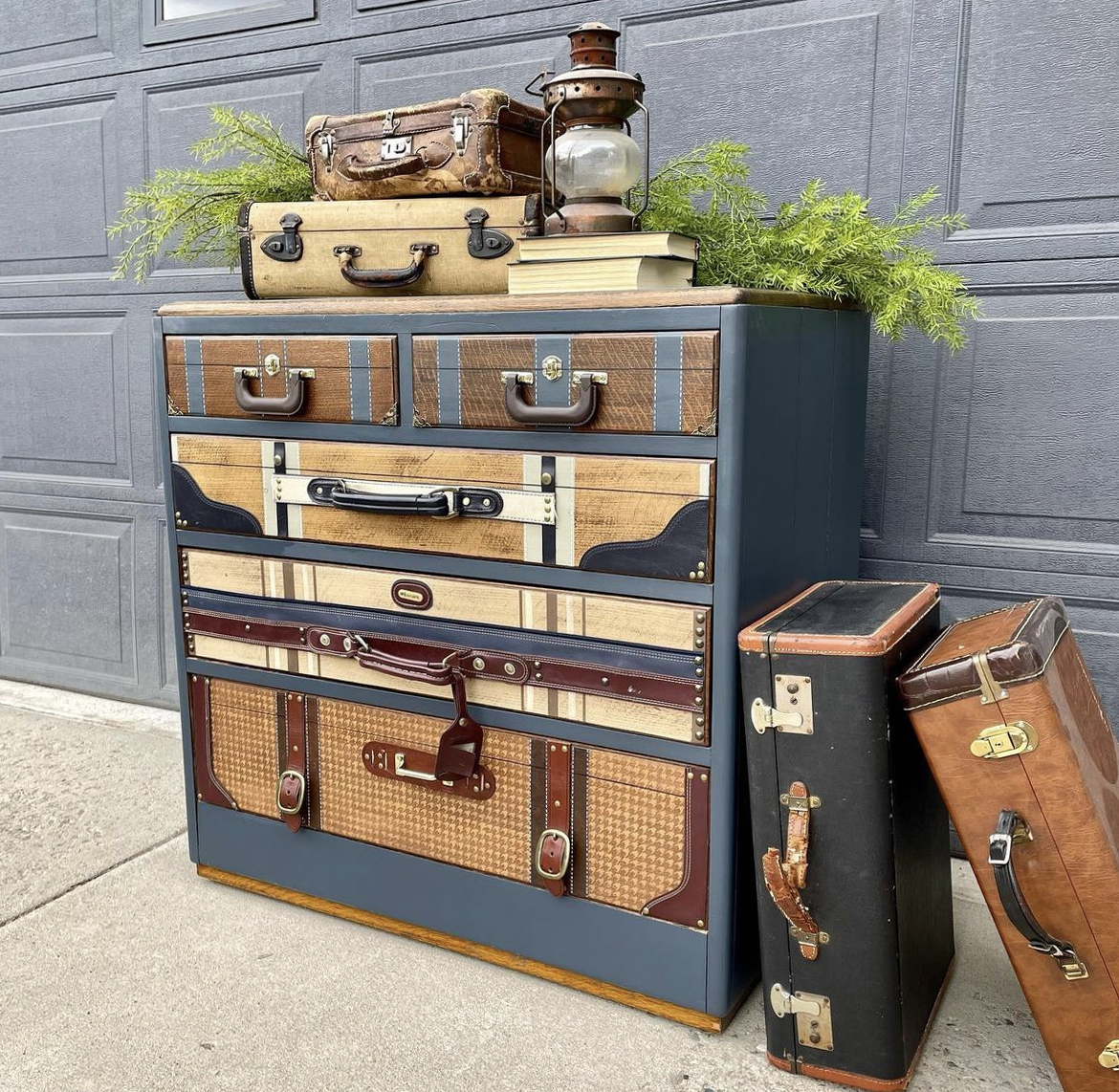The term “upcycling” refers to the process of updating or repurposing something to make it new again, and lately, the spotlight is on vintage furniture. Anyone can turn dated pieces into something different and unique, says Rena Madison, seasoned furniture upcycler and owner of Eclectic Grey in Fort Collins, but whether they do it well is up to them. It just takes a little work to bring them into the 21st century.
“Refinishing furniture the right way takes lots of practice, so if you’re new to this, start with small items, like a jewelry box or a wooden frame, before taking on your grandmother’s dining room table,” she says. “That way you can work on your technique before tackling your first big piece and expecting it to turn out well.”
Something about the rich history and hidden potential of old furniture speaks to us in the modern age, and upcyclers will tell you that today’s furniture just doesn’t live up to the quality and character of the solid wood pieces that came before them. That’s why it’s worth it to pour the time, money and effort into refinishing the older pieces you’ve inherited or stumbled upon.

Rena Madison of Eclectic Grey added floral accents to this vintage empire dresser.
The upcycling process
Refinishing a piece of furniture usually means sanding it down to the bare wood and sealing it, then staining or painting it and finishing it off with a protective topcoat. If you’re reupholstering a chair or sofa, Madison says to remove the old covering and build it back up with new springs and fabric. She also suggests tackling any necessary repairs before making cosmetic changes—like fixing broken legs or filling in holes—otherwise you won’t have a functional piece.
Since refinishing furniture requires lots of hands-on work, Madison says it’s worth it to invest in a quality sander, as well as a nice wood stain or paint and a topcoat that will withstand normal wear and tear. However, some materials don’t need to be the best or most expensive to get high-quality results.
Rachael Murray, furniture refinisher and owner of Rachael’s Revelry in Fort Collins, uses cheap chipper brushes and mini rollers from Home Depot to create fine textures in her work. “Start with what you can afford and get the basic tools like hammers and screwdrivers, then move on up,” she says.
But if you’re working with upholstery, Murray recommends investing in power tools that will make the process easier on your hands, such as a pneumatic stapler, which drives upholstery staples into the wood using compressed air. That’s the kind of investment she says will last for years or even decades.

Rachael Murray’s transformation of her grandmother’s chair.
Where to find quality pieces
Many people try their hand at refinishing furniture after inheriting family heirlooms, but for the rest of us, it’s a bit of a treasure hunt. Vintage finds can be discovered at estate sales, thrift stores, garage sales, antique stores, auctions and Facebook Marketplace.
Madison and Murray agree that finding furniture to refinish can be challenging, as quality pieces are rare and prices are rising. Madison says thrift store prices are often higher than an item’s original price, and you also have to factor the cost of repairing or refinishing the piece into your budget.
“I’d be wary of Facebook Marketplace because you can get scammed by strangers online really easily,” Madison says. “Never buy a piece sight unseen because once the money has been exchanged, you’re stuck with that piece whether you want it or not.”
Sometimes, the best pieces are free.
“Don’t forget about friends and family; if you hear that someone wants to get rid of an old coffee table, that could be a great, cheap find,” Madison says.
If you come across a solid wood piece that is damaged, don’t write it off. Madison collects these items and uses pieces of them to create something new (her latest project is a “Frankenstein” table with a cabinet door as the table top), and Murray gives them a whole new purpose. She’ll take dressers that are missing drawers and turn them into cupboards, repurpose old baby cribs into benches and transform 1930s-era radios into bar cabinets.

Vintage suitcase dresser. Photo courtesy of Eclectic Grey.
Incorporating upcycled furniture into a modern space
Maisie Knowles, owner of Maisie Knowles Interiors, suggests putting a room design plan in place before taking on a project. She says how you incorporate the piece will help determine your wood stain and paint choices, as well as any upholstery colors or patterns.
“I like to group things together in a color palette,” she says. “Say you have a piece of modern art that’s red. It would be a fun contrast to put an old piece of furniture in a similar color next to it, or something decorative like a red vintage vase. The color becomes your bridge so that those things relate to each other.”
Knowles says different materials can also act as a bridge if they are layered in a way that blends the old with the new. For example, an antique table can be incorporated into a contemporary dining room by placing a modern (yet vintage-looking) rug underneath it. If you have an antique end table next to a contemporary couch, she says you can top it with books, picture frames or a fresh flower arrangement to pull it all together.
No matter how you mix old and new furniture, Knowles recommends sticking to an 80-20 rule: “A good balance is 80 percent modern furniture and 20 percent vintage items or antiques. That creates a nice juxtaposition of the old and the new offsetting one another, adding some unique and personal elements so your home doesn’t feel like a Pottery Barn catalog.”
How to Spot Hidden Gems at an Antique Store
Look for solid wood. Quality antiques are made of solid wood, not a veneer face or particle board. Examine the back of each piece to see if you can find where a veneer could be attached—a dead giveaway are raised areas where condensation has slipped in and caused it to buckle.
Inspect the screws. Phillips screws were invented in 1932, but they weren’t mass-produced until after WWII. Since federal period furniture came back in style in the 1960s using Phillips screws, Murray says she can tell whether a piece is from the 60s or the original federal period of the early 1800s.
Smell it. Nothing can ruin a piece like the smell of cigarette smoke, mouse droppings or cat urine (often accompanied by cat scratches, which run deep). Don’t be afraid to smell the item before purchasing it, especially if you’re at an outdoor sale.
Check for missing parts. A great find will come with all its original parts, including antique doors and drawers, glass panes and one-of-a-kind hardware. Look for signs of repairs or replacements, and make sure the price reflects those modifications.







